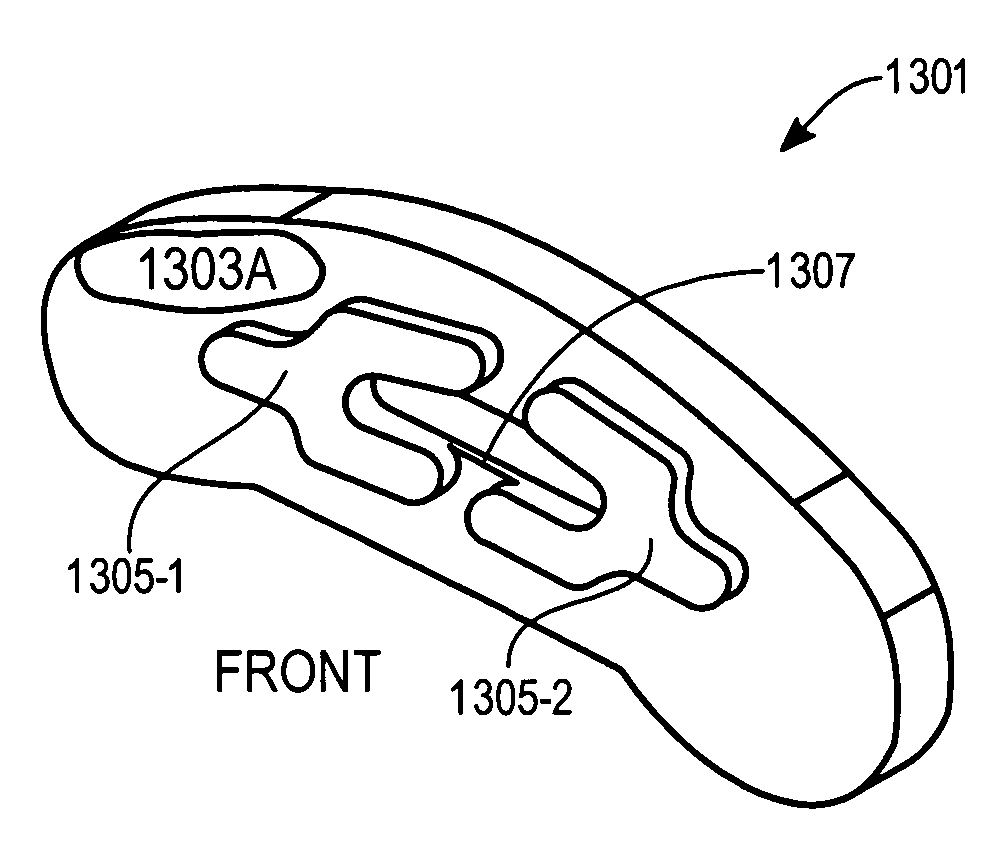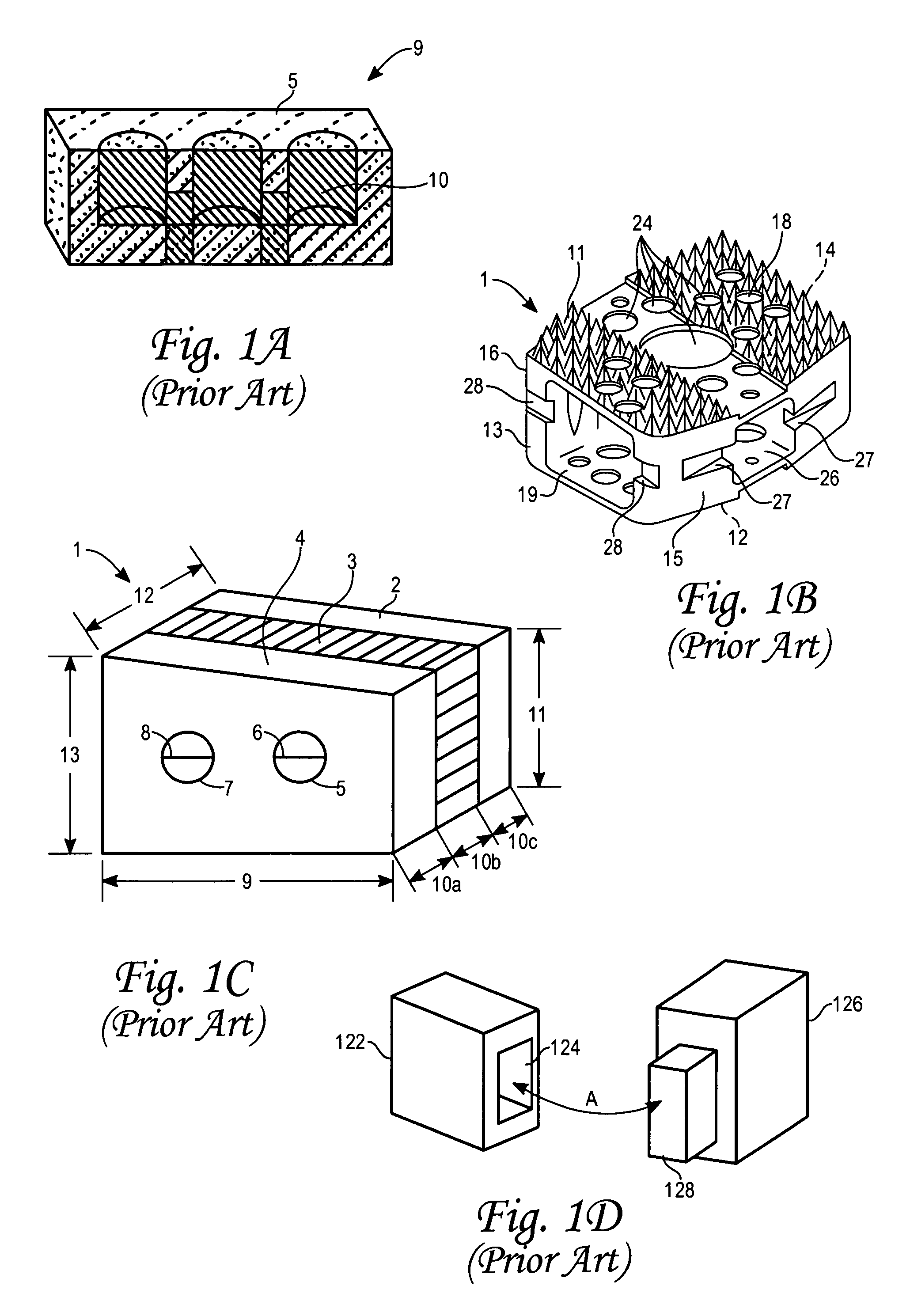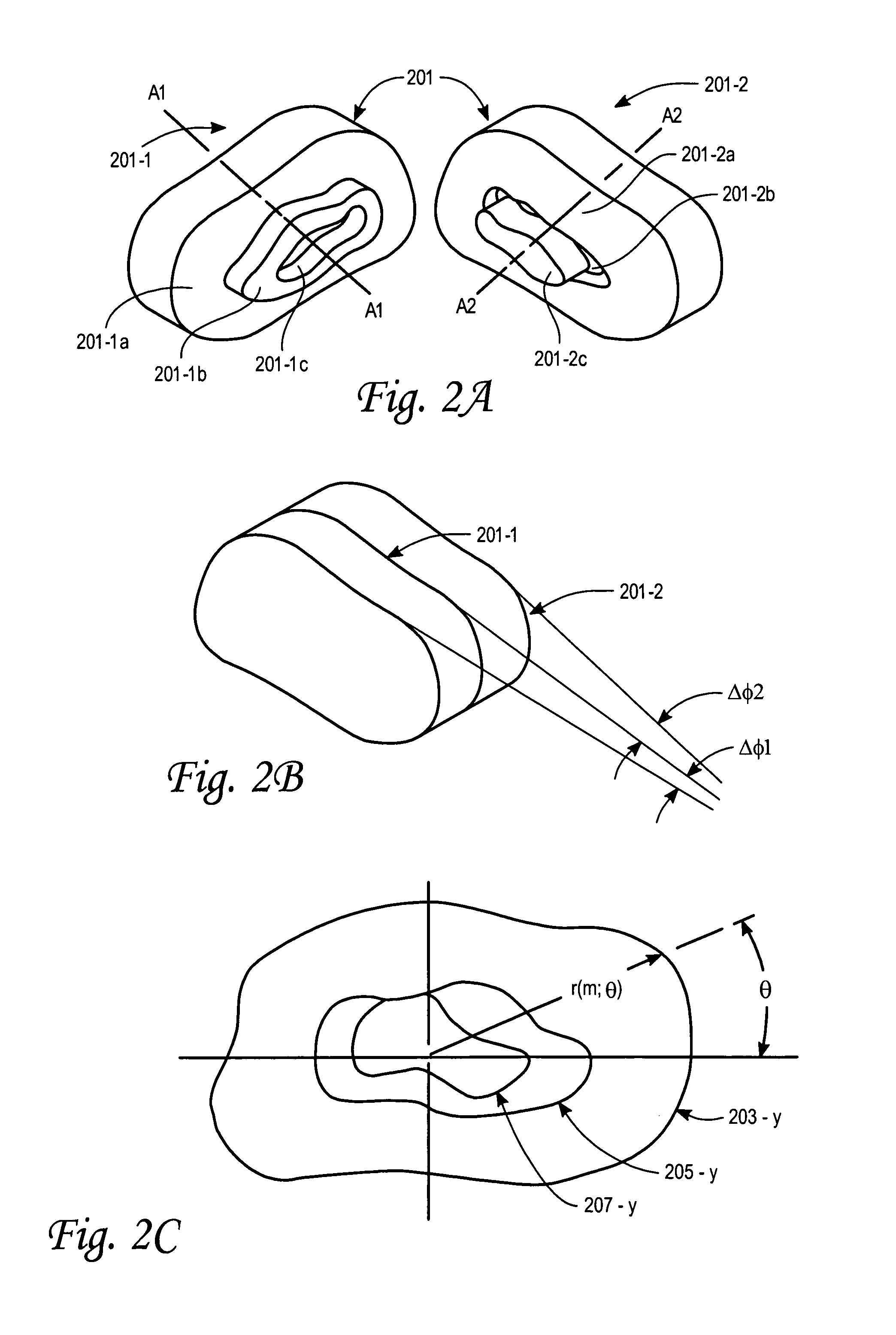Bone implant with osteo-inducing structure
a bone implant and osteo-induction technology, applied in the field of transforaminal lumbar interbody fusion implant, can solve the problems of inability to easily insert devices into the affected disk space, post-surgical pain, and injuring or degrading the major back muscles, so as to promote osteo-induction, promote growth and fusion of patient bone, and promote osteo-induction
- Summary
- Abstract
- Description
- Claims
- Application Information
AI Technical Summary
Benefits of technology
Problems solved by technology
Method used
Image
Examples
Embodiment Construction
[0024]FIG. 2A illustrates two segments, 201-1 and 201-2, having respective axes A1-A1 and A2-A2, according to one embodiment of the invention, which can be coupled or fitted together along a common axis to form an interlocking bone graft implant system, as illustrated in FIG. 2B. The bone implant segment 201-1 includes a first female annular region 201-1a, surrounding a second male annular region 201-1b, which in turn surrounds a third female annular region 201-1c. These annular regions may be, but need not be, cylindrically symmetric. The bone implant segment 201-2 includes a first male annular region 201-2a, surrounding a second female annular region 201-2b, which in turn surrounds a third male annular region 201-2c. Preferably, the material used here is predominantly cortical bone, although cancellous bone and other natural bone substances can also be used.
[0025]The implant segments 201-1 and 201-2 fit together so that the first female annular region 201-1a receives the first mal...
PUM
 Login to View More
Login to View More Abstract
Description
Claims
Application Information
 Login to View More
Login to View More - R&D
- Intellectual Property
- Life Sciences
- Materials
- Tech Scout
- Unparalleled Data Quality
- Higher Quality Content
- 60% Fewer Hallucinations
Browse by: Latest US Patents, China's latest patents, Technical Efficacy Thesaurus, Application Domain, Technology Topic, Popular Technical Reports.
© 2025 PatSnap. All rights reserved.Legal|Privacy policy|Modern Slavery Act Transparency Statement|Sitemap|About US| Contact US: help@patsnap.com



